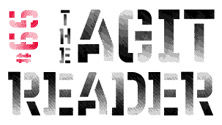
Diary and LP2
Sub Pop
One of the best results of the post-Nevermind world was MTV’s wild land-grab to put nearly every band that was a little bit “alternative” on the air. With the out-of-leftfield success of Nirvana, you never knew who would be the next one to blow up. It was either during an airing of Alternative Nation or, more likely, the late-night Sunday ritual of 120 Minutes that Seattle band Sunny Day Real Estate exploded into a number of American homes. Considering the ambition of their contemporaries, it wasn’t a fancy debut, just a simple performance clip with some Rotoscoped scenes. But the simplicity only seemed to highlight the intensity of the song.
The video was for “Seven,” the lead single from SDRE’s debut album, Diary. It was instantly sonically compelling, a wash of guitar blending with the jagged stomp of the rhythm section while the fragile lead vocal fought to be heard. It wasn’t a groundbreaking song—many similar qualities could be heard in other albums of the time—but the performance was so undeniable you knew this was a band to be that “next big thing.” Clearly that didn’t happen, but it wasn’t because of musical deficiency. Diary showcased the quartet—comprised of Jeremy Enigk (vocals/guitar), Dan Hoerner (guitar/vocal), William Goldsmith (drums) and Nate Mendel (bass)—firing on all cylinders. Songs like “Blankets Were the Stairs” and “Grendel” counterbalanced sonically aggressive moments with delicate, soaring vocals. In some ways, it was like a next generation version of REM, as Enigk’s vocal style was less than articulate. Yet somehow it hit on some subconscious level, making it irresistible.
“Seven” became an instant hit, but SDRE remained under the radar. At a time when the mainstream press was looking for personalities, this band only presented their music, and if you didn’t get it from the album, you weren’t going to get it at all. The songs were dynamic and engaging, but there wasn’t a “hook” to the band that would allow SDRE to crossover.
But there’s a reason why Diary is often sited as a foundation for the second wave of emo. The juxtaposition of hard and soft was the perfect reprise for those who couldn’t find a place in the soon to be Limp Bizkit’ed world. It’s one of those slow-burning records that gains strength over time. While no huge bands profited from the formula, many smaller bands took pages from the Sunny Day book. As a result, the cult status of the band only grew, and when they reunited years later (minus Mendel), the world was waiting with open arms.
Further adding to SDRE’s low profile at the time was the announcement that they were breaking up before the release of their second record. Instead of a triumphant return, the second album, officially untitled but commonly referred to as either “The Pink Album” or the currently Sub Pop approved “LP2,” became a bittersweet swan song. Other than the lead single “8,” which could be seen as wink and nod to Diary’s “Seven,” LP2 became a lost album. Goldsmith and Mendel went on to found the Foo Fighters with Dave Grohl; Enigk recorded an orchestral pop solo album; and Hoerner seemed to fall off the face of the Earth. It was a shame, because LP2 was a strong companion to Diary. Slightly less dense, it took everything that was great about the debut and streamlined it. Looking back on these two records, reissued in time for the first reunion tour with all four original members, it’s remarkable at how fresh they still sound. And while the bonus tracks are nice—an early version of “8” and some 7-inch B-sides—the real joy is the idea that they’ll be rediscovered by a new generation.
Dorian S. Ham
PAST PERFECTS
Thrasher Magazine's Skate Rock Volume 1
39 Clocks, Pain It Dark
The Stone Roses, The Stone Roses
The Jayhawks, Music from the North Country
Ze 30: Ze Records 1979–2009
24-Carat Black, Gone: The Promises of Yesterday
Beastie Boys, Ill Communication
Book of Love, Book of Love, Lullaby, Candy Carol and Love Bubble
The Scene Is Now, Total Jive
REM, Reckoning
Black Rio 2: Original Samba Soul 1971-1980
Pisces, A Lovely Sight
Big Star, #1 Record/Radio City
Mirrors, Something That Would Never Do
